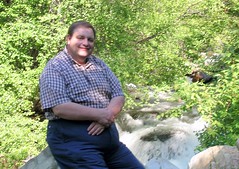Zadok Knap Judd
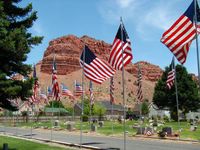
Kanab Cemetery - Memorial Day 2005
(Click on Photos to see a larger image)
On our way to Lake Powell, from St. George, we passed through Kanab, Utah. As we went past the cemetery, I noticed two columns of flags lining the main drive in the cemetery. The display was so striking to me, that I had to go back and take a pictures of it. I got out of the truck, and started snapping some photos. To my surprise, everyone else bailed out of the truck too. Dawn Ann remembered that she had some relatives buried there. So Dawn Ann and Amy started looking around the cemetery to find headstones of relatives. Bryan, on the other hand, wanted something to do, rather than just browsing around the cemetery.
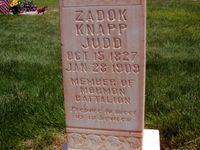
Zadok Judd
We were able to find a few of Dawn Ann's relatives there. In particular, we found the grave of Zadok Judd. Zadok's sister, Mary Lois Judd Mitchell, was Dawn Ann's direct ancestor. They were born in Canada, and later joined the church in Ontario during the early 1830's. A few years later, they decided to gather with the Saints in Kirtland, Ohio, only to find out that Joseph Smith, and the Elders of the church had already moved on to Missouri. The family continued on in their quest to join together with the Saints, in a 1,000-mile trip to Missouri. Soon after arriving, however, they were driven from Missouri, and eventually settled in Nauvoo, Illinois. Eventually, they were driven from Nauvoo too, and began their trek to the valleys of the Rocky Mountains.
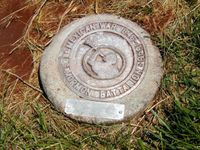
Mormon Batallion Insignia
Zadock, joined with the Mormon Batallion, which is noted on his headstone. There was a special insignia commemorating his status as a Veteran of the Mexican war of 1846-47.
Meanwhile, while we were finding and photographing headstones, Bryan located a fellow who was installing a headstone. Bryan learned how to use the block and tackle that the installer was using. Bryan lowered the 900 pound headstone in place, while the installer guided it into position. For Bryan, this something that really caught his interest, and was even fun for him.
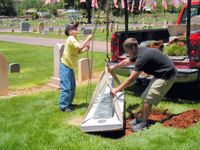
Bryan Installing the Headstone
You Can read more about Zadok Knapp Judd a a web site dedicated to his remembrance.


